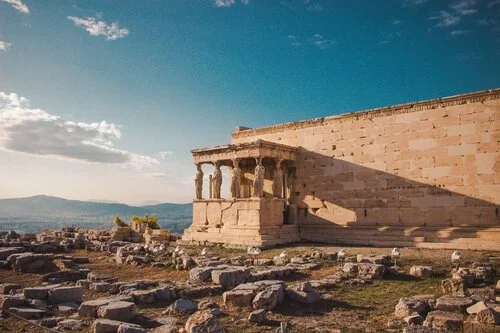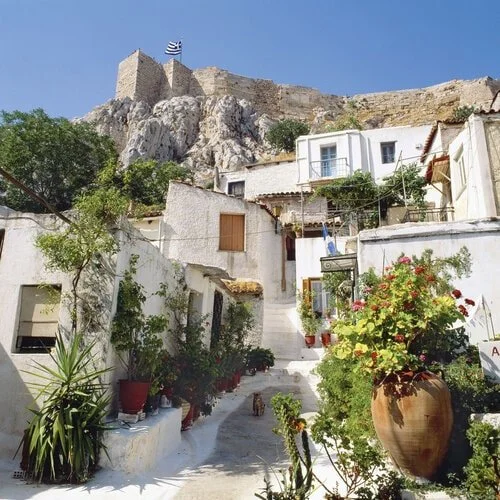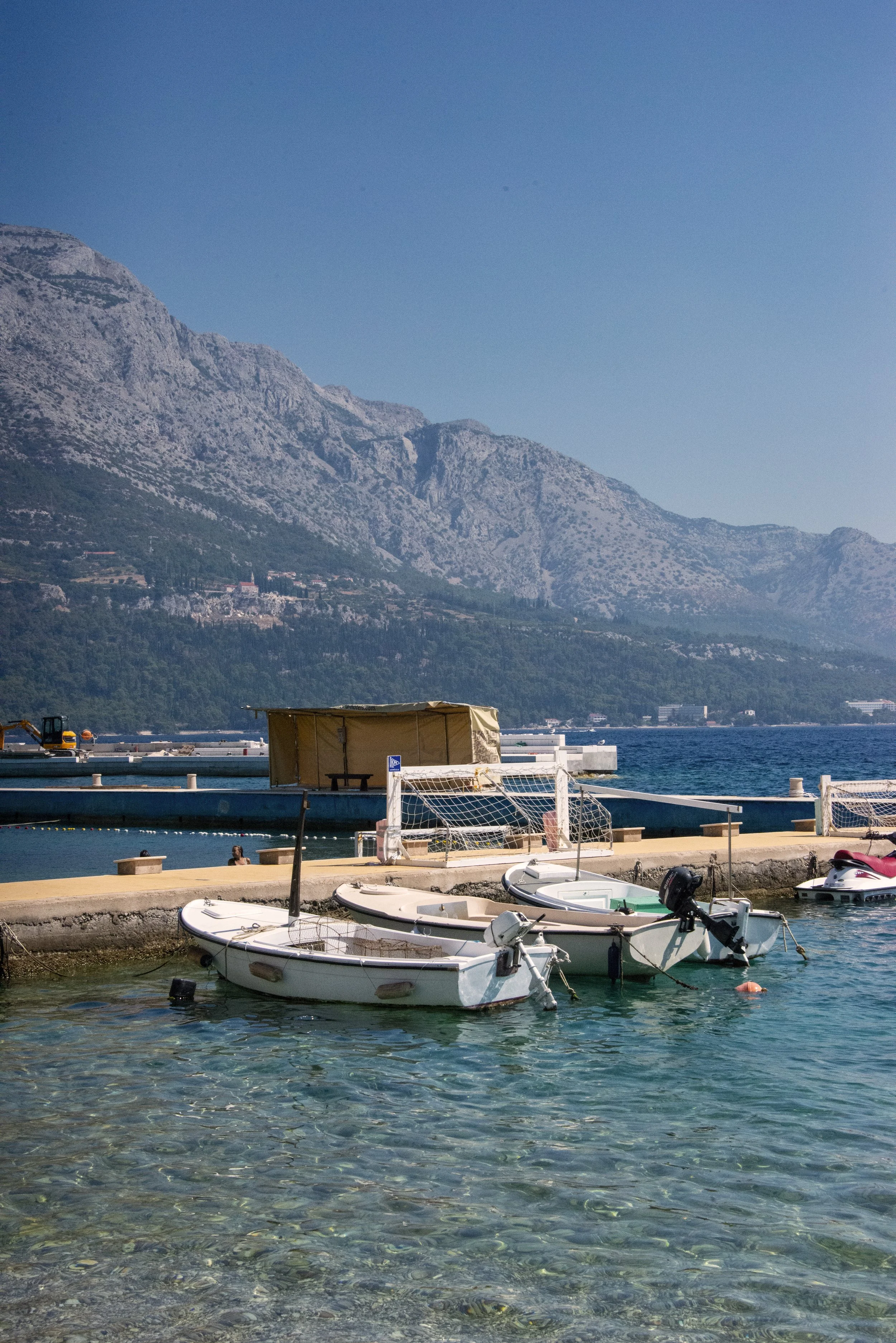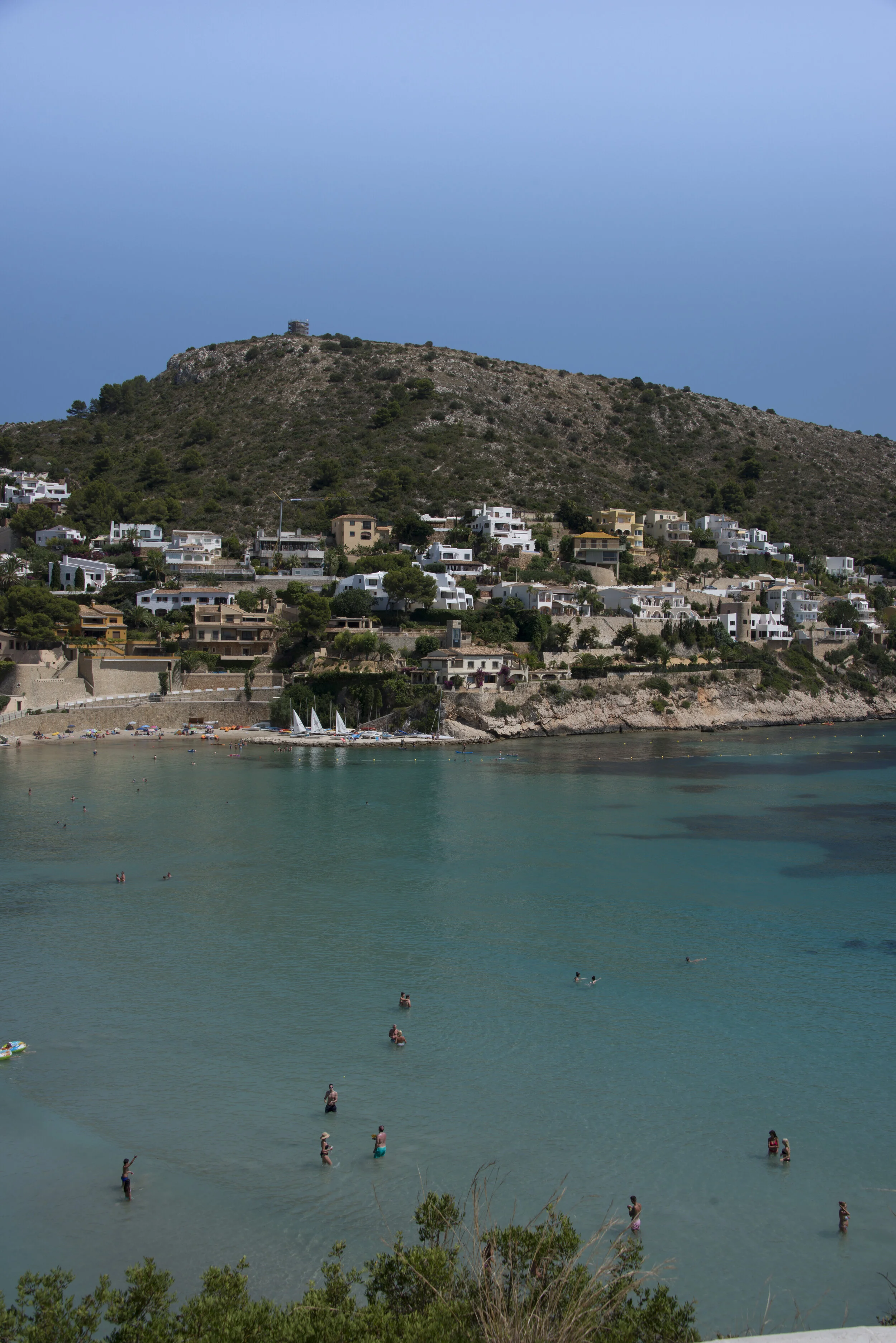How to Plan a Trip to Athens
As Europe’s oldest capital, Athens is a fascinating city where contemporary cultural and social life befalls amidst ancient remnants. As the birthplace of democracy, philosophy and mythology, Greece’s capital nowadays suffuses its rich history with the modern-day grunge of its graffiti-graced streets. Here’s How to Plan a Trip to Athens.
Most travellers flock to get a peek at Ancient Greece’s most prominent landmarks and thousand-year-old Byzantine churches perched on hillsides.
But, as with every big city, there’s a lot more to Athens than what you’d assume. So, if you’re planning a trip to Greece, let’s dive into everything you need to know about the country’s capital. Yasou!
8-Step Planning Checklist
Before you can take the full plunge, work your way through these eight simple steps. Whether you’re planning for the summer, spring, winter or autumn, planning a trip to Athens couldn’t be easier!
Follow this checklist to begin the adventure of a lifetime!
Step 1: Determine the Destination Country & Cities
Step 2: Decide on the Trip Duration
Step 3: Figure out When is the Best Time to Visit
Step 4: Create a Travel Budget
Step 5: Book Your Accommodation (preferably 3 to 4 months in advance)
Step 6: Research & Organise Transport & Activities
Step 7: Get Your Documents in Order (Visa, Passport & Travel Insurance)
Step 8: Nail the Process with this Packing List
Best Time to Visit Athens
The temperatures are scorching during Athens’ summertime, June to August, making it a challenge for avid sightseers.
We climbed the Acropolis in the blistering heat of mid-July. Needless to say, we arrived soaking wet, covered in our sweat, but it was nothing that a cold beer couldn’t fix! That being said, if you’re interested in island hopping your way through one of the many Greek islands, this is the perfect time to frolic around the waters of the glorious Mediterranean.
The winters are relatively mild, with temperatures hardly dropping below 10 degrees and minimal snow gracing some regions throughout the capital. One of the best times to visit Athens is from April to June or September to November when the weather is pleasant. The off-season offers lower prices and fewer crowds.
Language
The official language of Greece is Greek. Astonishing. Greek is not as easy to learn or pronounce as Spanish or Italian. However, mastering a handful of basic Greek vocabulary can go a long way with the locals. If you want to plan a trip to Greece, sprinkle in a few phrases and watch how the locals light up! Say Yassou to free Ouzo shots! English is widely spoken in the major tourist areas, along with some German and French.
Best Things to Do in Athens, Greece
Acropolis of Athens
If you want to know how to plan a trip to Athens, add the Acropolis to the top of your bucket list. Perched on a craggy boulder that peers down on the bustling city of Athens lie the long-standing Acropolis in all its glory.
The Acropolis encompasses the remains of many ancient buildings that uphold significant historical and architectural importance.
The Acropolis can be seen from almost every corner of the metropolis, and it still maintains its position as an animated hub in which, to this day, Athenian life revolves.
The city’s urban rooftops and balconies are positioned to face the landmark, serving as a reminder of the many transformations that have taken place worldwide, thanks to the ancient empire that once stood firm.
The most notorious remnant is, by far, the Parthenon. Once a temple, The Parthenon is dedicated to the goddess and patron of the city, Athena. This is the most significant remaining building of Classical Greece, with intricately decorated sculptures showcasing the opulent flair of ancient Greek art.
Planning a trip to Greece offers plenty for history buffs and culture enthusiasts, and a stop at the Acropolis is worth all the hype. As one of humankind’s utmost impressive monuments, The Parthenon nowadays symbolises Athenian democracy, Ancient Greece’s rich history, and the foundations upon which Western civilisation was laid.
Temple of Olympian Zeus
The Temple of Olympian Zeus, also known as the Olympieion or Columns of the Olympian Zeus, dates back to the 6th century BC. As the name suggests, the temple is dedicated to the ‘Olympian’ god, Zeus. This colossal monument took over 700 years to complete and boasts towering columns and a rather unusual layout, providing a true testament to the skills and work of the ancient Greeks.
Top tip: Admission is free if you have already purchased admission to the Acropolis! Yeehaw!
Cape Sounion and the Temple of Poseidon
If you want to plan a trip to Greece, add this gem to your itinerary! The impressively well-preserved Temple of Poseidon is perched on a rugged mountaintop. Built in 444 BC, the Temple of Poseidon once served as a ‘welcome sight’ for Greek sailors coming home from sea. One of the best things about this temple is that it’s hardly as busy as the other famous temples in Athens.
So if you’re looking for an experience that other travellers do not dominate, this will be your go-to. My best advice is to go to the Temple of Poseidon for sunset, as the site benefits from some of the most incredible views over the several nearby beaches in Legrena and Lavrio.
Syntagma Square
Named in commemoration of the Constitution, Syntagma Square is the main square in which modern-day Athenian life occurs. Situated facing the extravagant 19th-century Old Royal Palace, Syntagma Square is the most significant square, historically and socially speaking. It has persisted as the heart of Greece’s political and commercial activity.
Anafiotika
Straddling the northern face of the Acropolis Hill, Anafiotika sits just about the town of Plaka.
This 19th-century neighbourhood embraces the more peaceful side of Athens, away from the hustle and bustle of the city’s centre.
The magical thing about Anafiotika is that it exemplifies the lifestyle and charm of the illustrious Greek islands.
With whitewashed walls and townhouses to vibrantly-painted shuttered windows, the laneways and sidewalk taverns will have you feeling like you have left Athens and are meandering through the streets of Santorini.
Panathenaic Stadium
The Panathenaic Stadium, otherwise known as Kallimarmaro, is the world’s only stadium that has been constructed entirely out of marble. As one of Athens’ main attractions, this is most definitely a site that you do not want to miss!
Frankly, we could spend hours relaying Athens’ most prominent and captivating attractions. The Greek capital has a plethora of alluring theatres, temples, towers, historical sites, museums, and so forth that I’ve listed below for you to check out.
Hadrian's Library
Roman Agora
Athena Parthenos
Tower of the Winds
Stoa of Attalos
Byzantine Monastery of Daphni
National Library of Greece
Goulandris Museum
Theatre of Dionysus
Old Temple of Athena
Ancient Agora of Athens
Temple of Hephaestus
Odeon of Herodes Atticus
National Archaeological Museum
Propylaea
Hadrian's Arch
Archaeological Site of Kerameikos
Mount Lycabettus
If you want to plan a trip to Greece, you really can’t miss this. Also known as Lykabettos, Mount Lycabettus, is a sweeping limestone hill that sits at a summit of 300m above sea level. With pine trees painting the scene at its base, the Lycabettus Funicular can ascend the hill, which is basically a railway that runs up to the top from Kolonaki.
Mount Lycabettus is brimming with sublime, panoramic views of the colourful city down below. My best advice is to pack some snacks and water if you’re visiting during the summer and head up for a serene sunrise or sunset mission.
If you’re anything like me and love dragging your ass out of bed early to catch the sunrise, head to Strefi Hill, Hymettus, Filopappou Hill, or Areopagus Hill for some spectacular scenery. And, if you prefer to prioritise sleep, these viewpoints can also be enjoyed at other times of the day. Just be willing to share!
National Garden
If you’re seeking a dose of nature amongst the bustling Athenian city life, The National Garden is where it’s at. This whopping park spans more than 15.5 hectares and is sandwiched between the regions of Kolonaki and Pangrati. The National Garden features an impressive array of ancient ruins, mosaics, Corinthian columns, and other historically significant monuments.
Agora-Athens Central Market
The Agora-Athens Central Market is home to an eclectic array of Greek specialty products. From traditional Greek olives and feta to the most dangerously addictive cheese and my personal favourite, halloumi, there’s also freshly-caught seafood, Greek herbs and spices, collectibles, vases, carpets, jewellery, and art décor, among a variety of other things.
The Agora-Athens Central Market is the perfect little spot to wander around and eat your way into a food coma. Do yourself a favour and try some Tzatziki! The Agora-Athens Central Market is open every day of the week from early morning until late afternoon, except Sundays.
Top tip: Avoid visiting around lunchtime as it gets very crowded; aim for the early morning instead.
Best Markets in Athens
If you want to plan a trip to Greece, the various marketplaces are a wonderful experience to consider. For more shopping in Athens, be sure to check out the following:
Monastiraki Flea Market
Eleonas Market
Plaka Market
Agiou and Eolou Markou
Ermou Street
Athinas Street
Piraeus Harbour
Piraeus Harbour, also known as The Port of Piraeus, is the principal seaport in Athens. Tucked on the western coast of the Aegean Sea, this is the biggest port in Greece and is an ideal spot for all you early birds and sunrise lovers!
Vouliagmeni Lake
If you want to know how to plan a trip to Athens, take a break from the sightseeing and check out Vouliagmeni Lake. This picture-perfect spot can help you take a step back, rest and recharge your batteries.
Located near Vouliagmeni Beach, the Vouliagmeni Lake is a unique geological formation with charmingly lit rock walls serving as a backdrop in the early mornings and late evenings.
Parnitha National Park
The Parnitha National Park is speckled with a handful of hidden caves, deep gorges, and fresh springs awaiting to be explored. If you’re interested in hiking but don’t want to over-exert yourself, trek to the Bafi Refuge from the church of Ayia Triada. This trek will take approximately 40 minutes. For avid hikers, go on the 20km trek from Avlona to Agia Marina.
Best Beaches Near Athens
If you’re planning a trip to Greece, you’ll be surprised by the beauty on offer. On the lesser-known side of Athens, along the coastline of Attica, lies ample, diverse beaches for every taste. The best part is that they are only a short drive away and accessible via public transport too. With an extensive seafront promenade, Edem Beach is best suited to those who enjoy a stroll or powerwalk, might I add. Following the long stretch of sand, you can travel to two smaller beaches.
If you don’t mind spending a bit of dosh for a somewhat luxurious beach experience, you’ll want to head to Astir Beach in Vouliagmeni. The entrance charges per adult are €18.00 on weekdays and €28.00 on weekends. The amenities and overall service make paying that price a hell of a lot more worth it.
The Beach of Sounio will provide you with a genuinely unique experience due to the outstanding views of the Temple of Poseidon. My advice is to plant yourself on a sun bed, splash in the salty, crystal-clear water, and order some colourful cocktails.
Top tip: Avoid visiting these beaches during weekends or public holidays, as they can get overcrowded.
Tour the Greek Islands from Athens
The country’s capital city serves as an ideal base to explore the Greek Islands, so if you’ve got some time up your sleeve, don’t miss out! This 10-day Greek Island Itinerary winds through five to six of the most paradisial island escapes.
You’ll start the trip exploring the ruins in Athens before heading to party-plugged Mykonos. From there, you discover the wild beauty of Paros & Ios before spending a couple of days in stunning Milos. After that, you’ll finish your Greek islands itinerary in the whitewashed villages of Santorini. Sounds pretty heavenly, right?
Best Activities in Athens
If you’re hunting for the top-rated attractions in Athens, look no further. Here is the best of what Athens has to offer:
Where to Stay in Athens
If you’re wondering how to plan a trip to Greece, factoring in accommodation is essential. The capital city of Athens is arrayed with plenty of neighbourhoods and areas to consider. When choosing where to stay in Athens, consider factors such as closeness to attractions, public transportation, your budget limitations and the kind of atmosphere you prefer.
Before booking your accommodation in the capital city, thoroughly reading reviews is also a good idea. Here’s everything you need to know about where to stay in Athens.
Syntagma Square
Syntagma is the central square of Athens and one of the biggest transportation hubs. Boasting the stately Greek Parliament building, this lively square is surrounded by sprawling shopping streets, mouth-watering restaurants, and cute cafes. As the ancient central district of Athens, Syntagma hones in on its thriving historical background.
With archaeological ruins speckled throughout the area, this is one of the best places to stay in Athens for avid sightseers. Syntagma is well-connected with public transport, offering direct train lines that link to major attractions and Athens Airport.
This part of Athens is near highlights like the National Gardens, Ermou Street and the high-end Kolonaki neighbourhood. Syntagma is best suited to history lovers, backpackers, families, and first-timers.
Plaka
Perched under Acropolis Hill’s eastern slopes, Plaka is packed with history, abundant local taverns, and shopping opportunities.
This is one of the oldest neighbourhoods in Athens and is famed for its maze-like streets, neoclassical buildings and authentic Greek charm.
Sitting at the foot of the Acropolis, Plaka is suitable for tourists who want to be near significant highlights like the Parthenon, Acropolis and Ancient Agora.
Taste the flavours of Greek cuisine, discover boutique shops and meander through Plaka’s narrow laneways framed by pastel-coloured buildings.
Here you’ll find hotels, boutique guesthouses and plenty of apartment rentals. Plaka is one of the best places to stay in Athens, especially if it’s your first time visiting this remarkable city.
Kolonaki
Sitting on the slopes of Mount Lycabettus, Kolonaki is the heart of Athens’ high-end and luxury accommodation options. Arrayed with upscale boutiques, art galleries and quirky cafes, this neighbourhood boasts a more upscale feel than the city centre.
With ample attractions and monuments close by, there are also many upscale restaurants, fancy bars and a happening nightlife scene to satisfy those who aren’t bound to a budget. If you’re wondering where to stay in Athens, Kolonaki offers luxury accommodations, high-end hotels and serviced apartments.
Monastiraki
Monastiraki fuses the old and modern Athens, offering everything from flea markets to taverns. This neighbourhood shows you more of the realistic side of everyday life for local Athenians. This vibrant neighbourhood hosts a combination of mid-range hotels and budget-friendly options, and it’s become one of the more affordable ends of Athens.
Centred in the heart of Athens’ vibrant street life, there’s also excellent access to public transportation. If you plan a trip to Greece, this neighbourhood offers authenticity and convenience. Monastiraki is one of the top places to stay in Athens, especially for those who want a taste of local life.
Psiri
Pinned as an up-and-coming neighbourhood in Athens, Psiri is the go-to neighbourhood for all my fellow late-night partygoers. If you love dabbling in the nuances of nightlife, look no further because this is where you’ll want to plant your hungover ass. Renowned for its wild nightlife, trendy bars and art galleries, there’s a clashing contrast of traditional and modern edifices.
Soak up the bohemian vibes, spot the vibrant street art and listen to local live music. Psiri is also fit for budget-conscious travellers and backpackers, with a wide variety of budget hotels and hostels. So if you want to save some cash, this is the ideal neighbourhood for you!
Exarchia
Situated just outside the historical centre of Athens towards the downtown area, Exarchia has a unique flair and is rich in character. The neighbourhood has been brought to life thanks to the flourishing graffiti scene, and it’s fully embraced the new wave of coffee culture that has been taking European destinations like Barcelona and Rome by storm in recent years.
With an array of many affordable accommodation options, Exarchia is a prime location for coffee enthusiasts, culture vultures, adventure lovers, backpackers, couples, digital nomads, and, even though I wouldn't say I like using this word, hipsters.
Top Hotels in Athens, Greece:
How to Get Around Athens
Athens is home to an impressively reliable public transportation system that spans almost every inch of the city and its surrounding neighbourhoods. Getting around Athens is hassle-free if you want to plan a trip to Greece. Here's everything you need to know about navigating the capital city.
Metro
The Athens Metro is one of the most convenient and efficient ways of making your way around the city. There are three lines linking to the tram, bus and suburban railway. Line 1 is green, line 2 is red, and line 3 is blue. The metro connects the most significant areas of Athens, like the city centre, tourist attractions and suburbs. Trains begin around 5:30 am and run until midnight on weekdays and until 2 am on weekends.
So, plan your trip accordingly so you don’t accidentally find yourself stranded somewhere! (We’ve all been there)… You can purchase metro tickets from ticket vending machines inside the stations. If you’re a budget traveller, consider buying a multiple-ride ticket (e.g., daily or weekly passes).
To gain access to the public transport system, you’ll need to purchase an Athena Card, which is reloadable and can be used on all forms of public transport. A one-way ticket costs €1.40 and is valid for 90 minutes. A one-day unlimited pass is €4.50, and a five-day pass is only €9.00.
Tram
The Athens Tram serves Athens’ coastline and links the city centre with the southern suburbs and the coastal regions. This is one of the most scenic ways to get around Athens, and you’ll get to bask in the panoramas of the sea and the Athenian Riviera.
Trams run from early morning until midnight on weekdays and until 2 am on weekends.
Bus
Athens boasts an expansive bus network that encircles the entire city. This is the ideal option for reaching those areas that aren’t serviced by the metro or tram.
Buses begin in the early hours of the morning and run until midnight. There are also a handful of night bus services too.
Taxi and Rideshare
Both rideshare services and taxis are widely available throughout Athens. You can hail one on the street, at a designated taxi stand, or book one through an app. Standard taxis in Athens are yellow and have a green or red light on top that indicates availability. Make sure that the driver is using the meter! And as with every major city around the world, taxis are available.
In Athens, taxis are surprisingly cheaper than in other major European cities (cough cough, Paris). But as always, I’d recommend an Uber to save yourself some cash.
Rental Cars or Motorcycle
Renting a car or motorcycle could be a great way to see the city, especially if you plan to explore the surrounding areas. Having your own vehicle allows you to discover the sites at your pace. You can create your own routes, detours and tick off all the bucket list activities. Plus, you don’t have to wait around in long lines for public transport. And that’s always a positive! In Athens, several car rental agencies and bike rental shops are available.
It’s essential to remember that Athens’ traffic can get a bit hectic (to say the least), so make sure you’re comfortable with navigating the heart of the city’s congestion. Parking can also be challenging, so prepare ahead and arrive as early as possible at popular tourist destinations.
Walking
Athens is a very walkable city, and most of the major attractions are reachable by foot. The city centre and historic districts are woven with labyrinth-like streets and steep hilltops, so pack comfortable walking shoes. Sorry friends, stilettos just won’t cut it. If walking isn’t your style, Athens has an influx of bicycle rentals popping up day by day.
Athens Airport
The Athens International Airport (ATH), also known as Eleftherios Venizelos, is situated roughly 33km from the city’s centre. As the primary airport serving Athens, there’s a currency exchange, ATMs, shopping, restaurants and car rental companies. Here's everything you need to know about how to get to/from Athens Airport.
Suburban Railway (Proastiakos): The Suburban Railway connects Athens Airport with the city centre (Larissis Station) and other cities in the area, like Kiato and Chalkida. You’ll find the metro station located just outside the main terminal building. Tickets cost €9, and the journey takes around 40 minutes.
Buses: Public buses (KTEL) and express buses (X-buses) link the airport with different parts of Athens. If you plan a trip to Athens, I’d recommend getting the Airport Express Bus, which operates to and from Syntagma, for approximately €5.00. The bus route is pretty scenic, and it’s air-conditioned!
Taxis: Taxis are available at designated taxi ranks outside the main terminal building. You could catch a cab to central Athens from the airport, and until midnight, there’s a flat fee of €38.00. Afterwards, from midnight until 5:00 am, the flat fee will jolt up to €54.00... Yikes.
Athens Travel Tips
If you want to plan a trip to Athens, avoid visiting during the hottest month, August. Like Barcelona, locals will take off for holidays, leaving a handful of restaurants and stores closed for the entire month.
If you’ve got a flexible itinerary, I’d recommend visiting Athens during Apokreas, a carnival held at the end of winter to celebrate the spring season. Locals and tourists come together on the streets to drink, eat, dance, party, and celebrate the new season.
Consider purchasing a city pass or card so you don’t have to queue up in long lines to enter museums, historic sites and transport. Buying a city pass works out a lot cheaper than purchasing individual tickets. Prices start at €30.00 for adults and €15.00 for a child.
As with every central European city, watch out for pickpockets on the buses, metro, and trains.
During the rainy season, be aware of the slippery streets and steps to the Greek monuments. They are made of marble and could cause severe damage if you aren’t cautious.
From November 1st to March 31st, all of the major attractions in the city are free on Sundays.
For €30.00, you can buy a combo ticket to the Acropolis, the Ancient Agora, the Roman Agora, Hadrian’s Library, Aristotle’s School, the Temple of Olympian Zeus, and more. Considering the entrance fee is €20 for the Acropolis alone, this is a bloody bargain!
When looking for a hostel in Athens, try to find a place closer to the historic city centre rather than places like Omonia or Exarcheia (these areas can get a fair bit dodgy at night).
Whether you enjoy exploring the rich history, ancient monuments, or off-the-radar adventure, I assure you that these spots will not disappoint.
Be sure to add Athens as a destination to your Travel Bucket List. This comprehensive guide on How to Plan a Trip to Athens can kick the hassle out of your next getaway. So, what are you waiting for?

















Situated at the foothills of the Sierra Nevada mountain range, this city boasts something for adventure, architecture and nature lovers alike. From the ancient Alhambra Complex to the saline white streets of Albacín, this Spanish city is steeped deep in charm. If you’re wondering how to plan a trip to Granada, look no further!